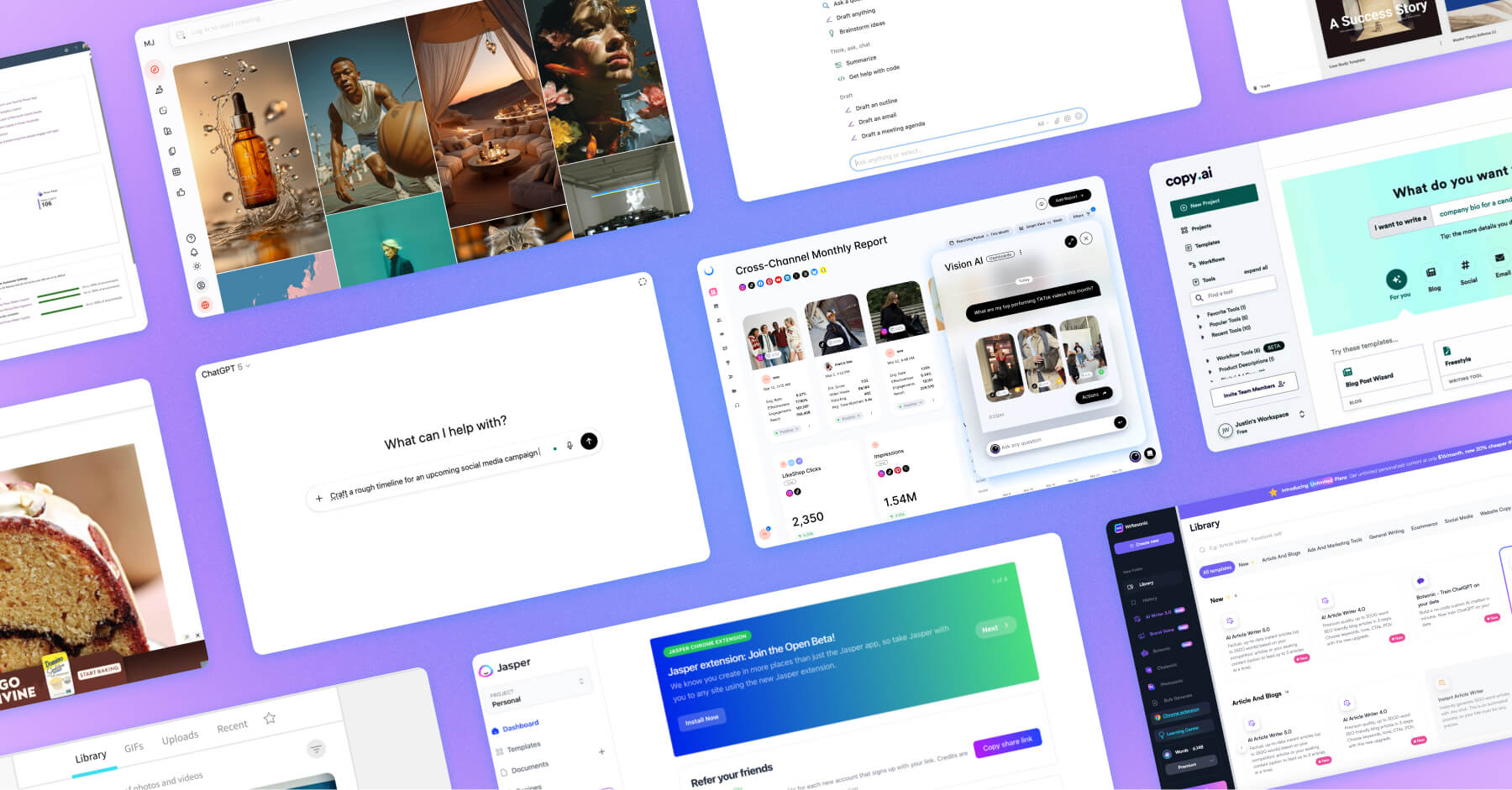How AI Is Transforming Creative Testing on Social Media
Learn how AI Is rewriting creative testing for predictable performance on social media.

For years, creative testing on social media has relied on a mix of instinct, traditional trial-and-error, and performance data. Marketers would brainstorm concepts, produce several variations of an ad, and run A/B tests to determine which visuals, headlines, and formats resonated best. While this approach worked, it was time-consuming, resource-heavy, and limited by how quickly teams could produce and analyze new creative.
Now, artificial intelligence is changing that. AI has become the driving force reshaping how brands create, test, and optimize content, setting a new standard for AI content creation and advertising. From automating the production of ad variations to predicting which creative will perform best before it even launches, AI tools are transforming how marketers approach experimentation on platforms like Instagram, TikTok, and Facebook.
Of course, with change comes both opportunity and uncertainty. Many marketers worry that AI will replace human creativity altogether. In fact, 47% of marketers, according to a recent study by the Marketing AI Institute, believe AI will eliminate more jobs than it creates. But the truth is, AI isn’t here to take your job; it’s here to enhance it. The real threat isn’t the technology itself; it’s the people who learn how to use it better than you. The brands and marketers who embrace AI for content creation today will be shaping the future of creative work tomorrow.
Key Takeaways:
- AI is transforming creative testing. Helping marketers move from slow, manual A/B testing to fast, data-driven precision.
- Creative still matters most. Even as algorithms and trends change, strong creative remains the single biggest driver of campaign success.
- Real-time optimization and personalization are the future. Adaptive ads and AI-driven insights will let campaigns evolve automatically based on audience behavior.
- Ethical and creative oversight are essential. Marketers must stay aware of data bias to ensure the best results from AI insights.
- AI enhances creativity; it doesn’t replace it. Marketers who learn to use AI effectively will lead the next wave of innovation in social media marketing.
Why Creative Testing Matters More Than Ever
In today’s attention economy, creative is often the single biggest factor determining whether a campaign succeeds or flops. Algorithms change, audience behaviors shift, and new platform trends surface almost daily, but great creative still drives performance. That’s why testing is more important than ever.
Traditionally, creative testing meant launching multiple ad variations, collecting performance data over time, and manually reviewing what worked. This process gave valuable insights, but it was slow and often reactive. By the time you identify your top-performing creative, audience interests have already moved on.
How AI Speeds Up the Creative Testing Cycle
Now, the landscape looks very different. Thanks to advancements in content creation and social media analytics tools, brands no longer have to wait weeks to learn what resonates. Software like Dash Social’s predictive AI analyzes patterns across thousands of data points, from engagement rates to visual elements, to predict which creative will perform best before it goes live.
And marketers are catching on fast. In fact, 66% of marketers say AI is very important or critically important to their marketing success over the next 12 months. That’s because the speed and intelligence AI brings to creative testing is becoming necessary to stay competitive, especially on fast-moving social platforms where trends can shift overnight.
The ability to generate and evaluate content in real time allows marketers to stay agile, respond quickly to audience feedback, and scale successful creative across channels. In other words, creative testing is no longer just about finding what works and sticking to it; it’s about continuously evolving with your audience, and AI makes that evolution possible.
How AI Is Changing the Way Brands Test Creative
The creative testing process has always been about experimentation. Finding the right mix of visuals, copy, and storytelling that strikes a chord with an audience is an important but time-consuming process. What’s changing now is how fast and how intelligently brands can run those experiments. With the rise of AI content creation and AI advertising tools, marketers no longer have to rely on manual testing cycles or gut instinct alone. AI can generate, predict, and optimize creative performance instantly, allowing teams to move from trial-and-error to insight-led precision.
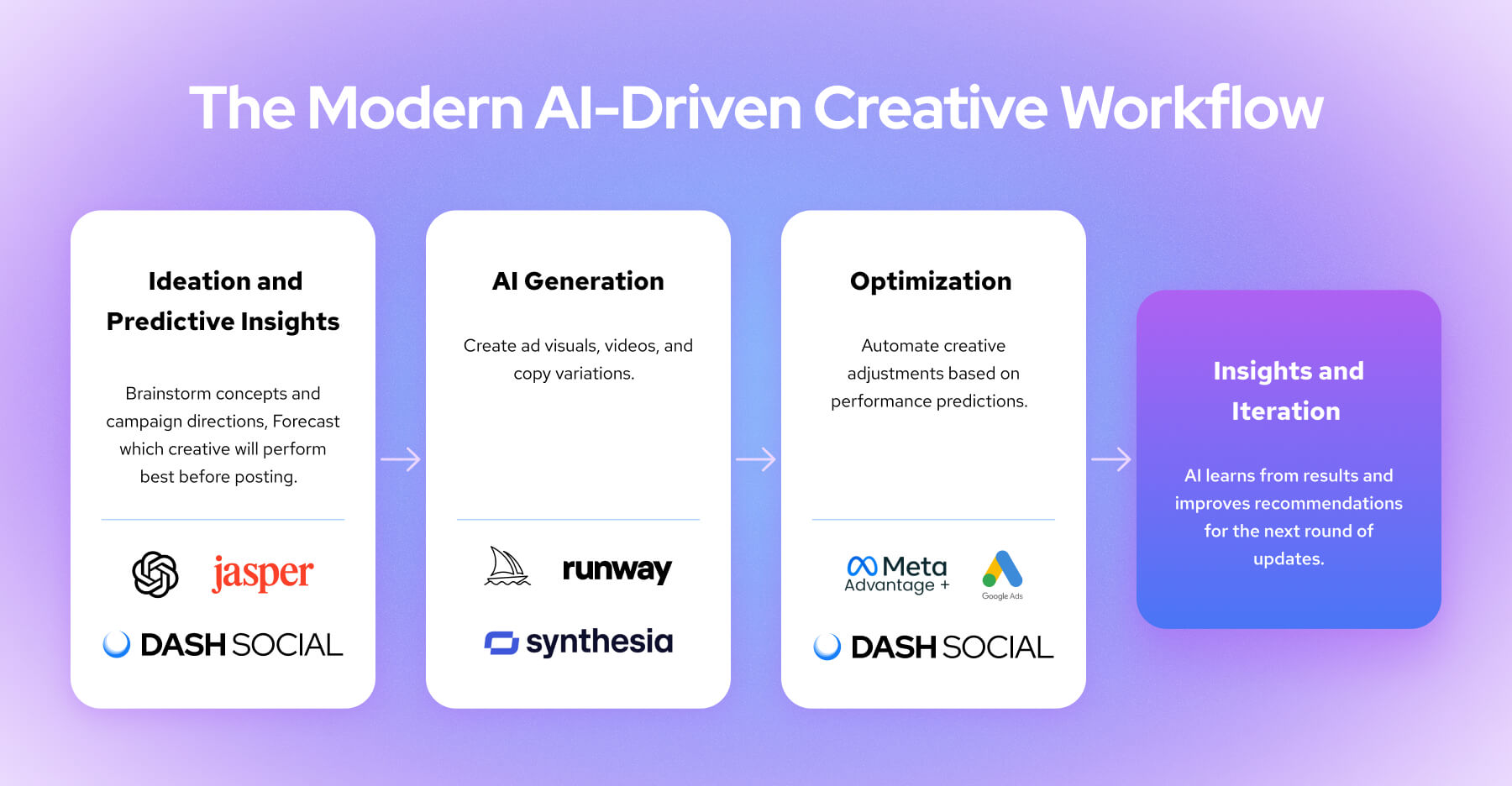
AI-Powered Creative Generation
Gone are the days when marketers had to manually brainstorm, produce, and test every version of an ad. Today, content creation AI software can generate multiple creative variations in minutes. Adjusting visuals, copy, and calls-to-action to fit different audience segments or social platforms. Pair these tools with AI-powered predictive performance software like Dash, and these systems help brands create not just more content, but content that performs better overall.
→ Why It’s Better:
Instead of testing a handful of ideas, marketers can now explore hundreds of variations at once, giving them a faster and deeper understanding of what resonates. The result is a constant flow of creative insights that fuel better-performing ads and more efficient workflows.
→ Brand Example:
Coca-Cola used AI-generated imagery in its global “Create Real Magic” campaign, empowering fans to co-create ad visuals. The result was both highly engaging and efficient. A campaign that tested creative ideas at scale while maintaining brand integrity and deepening its connection with its community.
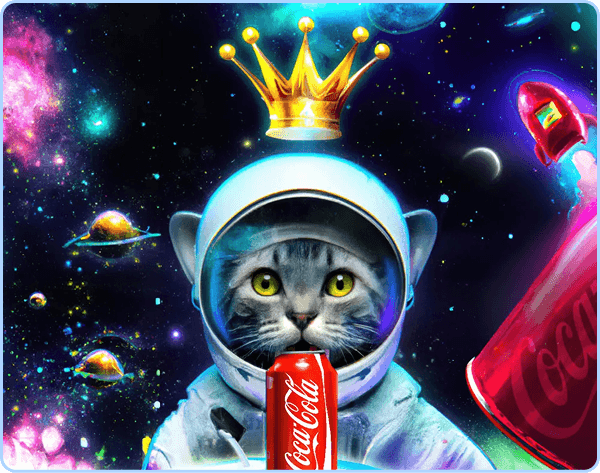
Automated A/B Testing and Predictive Insights
Traditional A/B testing often meant launching two or three versions of an ad and waiting days or weeks for results. With AI-driven predictive modeling, that waiting game is over. Machine learning can analyze thousands of creative combinations (headlines, visuals, tone) and forecast which are most likely to perform before they even go live.
AI also uses sentiment analysis to interpret how audiences emotionally respond to creative. By evaluating engagement data, comments, and reactions, AI identifies which ads inspire positive sentiment and which fall flat.
→ Why It’s Better:
Predictive testing removes the guesswork. Marketers can confidently invest in high-performing creative from day one, reducing wasted spend and improving campaign ROI. It’s not just faster; it’s smarter and more data-informed than ever before.
→ Brand Example:
Australian clothing brand Cotton On leverages Dash Social’s AI-powered content prediction insights to forecast and optimize Instagram post performance. By using data to guide creative decisions during photoshoots, the brand is able to make decisions in the moment, resulting in engagement rates 70–90% higher than average.
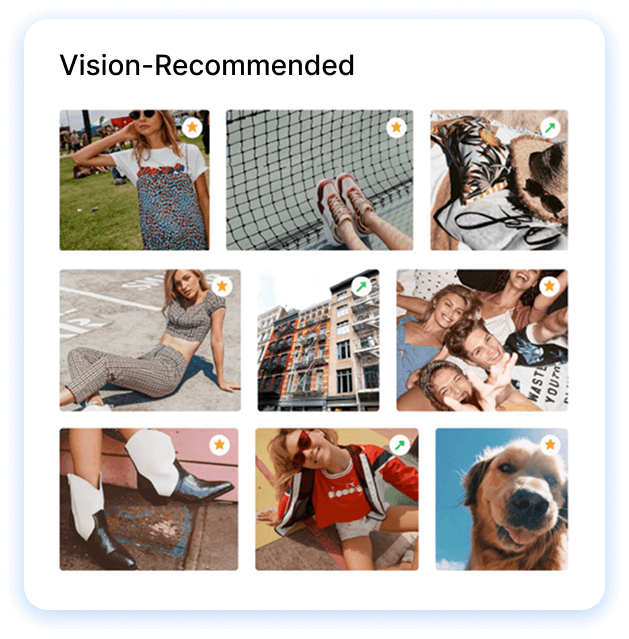
Read the case study: How Cotton On Is Taking the Aussie Aesthetic Global with AI
AI Optimization Tools in Action
The biggest advertising and social media management platforms are already leading the charge with AI content creation and testing tools built directly into their systems.
Meta’s Advantage+ Creative automatically tests variations of an ad’s format, copy, and visual elements, including factors such as image brightness, filters, and animation styles to predict which version will perform best.
Google Ads’ AI-driven recommendations use predictive analytics to tailor creative to audience intent and search behavior, ensuring each ad feels personalized and relevant.
Tools like Dash Social take this a step further. Its AI-driven insights analyze your content performance, competitors, and community engagement to provide real-time, data-backed recommendations. By letting data guide the creative selection process, you can identify which trends are worth investing in, predict which posts will resonate most with your specific audience, and save up to two hours a week.
→ Why It’s Better:
These tools automate what used to take days of manual adjustments, streamlining workflows and freeing teams to focus on creative strategy.
→ Brand Example:
Jones Road Beauty is an early adopter of AI-powered insights and tools. By embracing this technology, the team spends less time managing campaigns manually within Meta, while improving performance and streamlining media buying. Relying on machine learning to optimize budget allocation frees the team up to focus on what matters most to them: creative testing and storytelling.
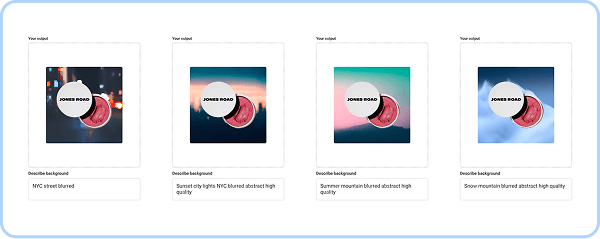
Content today has to do more than just look good; it has to perform. AI’s ability to generate, test, and optimize creative at lightning speed gives brands the agility to keep up with fast-changing social media trends. The combination of AI content creation, predictive analytics, and automated testing empowers marketers to make creative decisions backed by data, not just intuition. Leading to social media campaigns that are more efficient and effective.
AI Tools That Are Revolutionizing Content Creation
Today’s AI content creation tools help marketers move faster from concept to campaign. They are transforming how ideas are developed, tested, and optimized. AI helps teams move faster from concept to campaign without sacrificing quality or creativity. A growing number of platforms are making AI-powered creation more accessible than ever:
- Jasper helps teams generate on-brand marketing copy, ad headlines, and social captions in seconds. This is perfect for A/B testing message variations.
- ChatGPT supports everything from brainstorming campaign concepts to writing email copy or social post ideas, speeding up early-stage ideation.
- Midjourney and Runway allow creators to instantly generate or enhance visuals and videos, producing multiple creative directions for testing without a full production team.
- Synthesia lets brands produce studio-quality videos with AI avatars and voiceovers, ideal for personalized campaigns or quick creative experiments across markets.
- Dash Social uses predictive AI insights to analyze content performance, helping marketers identify which creative concepts are most likely to perform before posting. This turns creative testing into a data-driven process.
In the past, testing new creative ideas meant lengthy production timelines and limited bandwidth. The agility that AI tools for content creation bring to teams means more time to focus on performance, analysis, and refining content. Instead of waiting for post-campaign data, marketers can continuously test ideas and double down on what works.
Future of AI in Creative Testing
As AI technology continues to evolve, creative testing is becoming faster, wiser, and more adaptive. Soon, brands will test creative and deploy campaigns that continually optimize themselves based on audience behavior.
→ Smarter, Adaptive Creative
The next generation of AI tools will enable adaptive ads that automatically adjust visuals, messaging, and format based on audience behavior. Imagine an ad that swaps out imagery or tone depending on who’s viewing it or how they’ve interacted with your brand in the past. This kind of real-time optimization will make creative testing continuous rather than cyclical. Helping marketers deliver the right message to the right audience, at exactly the right moment.
→ Hyper-Personalization at Scale
AI’s ability to analyze and act on data instantly means marketers can move beyond generic targeting and create hyper-personalized content across every touchpoint. From personalized video campaigns to predictive creative recommendations, AI is paving the way for a new level of relevance and engagement that manual testing could never achieve.
→ Creative and Ethical Considerations
As with any powerful tool, AI also comes with challenges. One of the biggest is maintaining authenticity and originality in a world where AI can generate content in seconds. There’s also the risk of bias. When trained on skewed or limited data, systems can create a negative feedback loop that reinforces existing stereotypes and excludes diverse perspectives. To get the best results, marketers will need to approach AI with curiosity and responsibility, pairing human oversight with machine intelligence.
AI Content Creation FAQs
What metrics define "accuracy" for AI content predictions?
Accuracy refers to how closely AI predictions match real-world performance. Common metrics include:
- Correlation: How strongly predicted results align with actual engagement or conversions.
- Error Rate (MAE/RMSE): How far off predictions are from real outcomes on average.
- Precision and Recall: How often the AI correctly identifies top-performing content.
- Lift: How AI-selected creative performs better compared to non-AI selections.
How much historical data do these AI predictors need?
It depends on the complexity of the model, but most AI content predictors perform best with a few months to a year of historical data across multiple posts or campaigns. The more high-quality data available, including engagement metrics, creative formats, captions, and audience insights, the more accurate the predictions. However, modern AI models can start generating reliable insights with as few as a few hundred data points, improving continuously as more data is added over time.
What biases commonly affect AI social media forecasts?
AI forecasts are only as good as the data they’re trained on, and social data isn’t always neutral. Common biases include:
- Popularity bias: Overvaluing content that already performs well, which can make it harder for new or niche content to break through.
- Representation bias: When training data lacks diversity, the AI may favor certain audiences, styles, or topics over others.
- Recency bias: Giving too much weight to recent trends, causing predictions to shift too quickly.
- Engagement bias: Assuming likes or comments always equal success, which can overlook long-term brand impact or sentiment.
- Algorithmic bias: When the platform’s own algorithm skews what data the AI sees, reinforcing existing patterns.
To minimize these biases, it’s important to use diverse datasets, review predictions regularly, and combine AI insights with human judgment.
What are the benefits of using AI in advertising?
AI makes social media advertising faster and smarter, making creative work more impactful. It helps teams brainstorm fresh ideas, predict which campaigns will perform best before launch, and automatically test and refine creative based on real-time results. AI also makes it easier to personalize content for different audiences at scale, so every ad feels more relevant. Ultimately, it’s not about replacing human creativity; it’s about giving marketers the tools to work faster, make smarter decisions, and spend more time on the ideas that truly move the brand forward.
How accurate are AI predictions for ad performance?
AI predictions for ad performance are becoming impressively accurate, especially when the models have enough high-quality data to learn from. Many tools can predict engagement or conversion outcomes with strong alignment to real results, often outperforming human intuition. That said, accuracy can vary based on the amount and quality of your campaign data, audience diversity, and creative consistency.
Think of AI predictions as highly informed guidance, not guarantees. They’re most powerful when combined with human judgment. Helping marketers make better decisions while still leaving room for creativity and experimentation.



